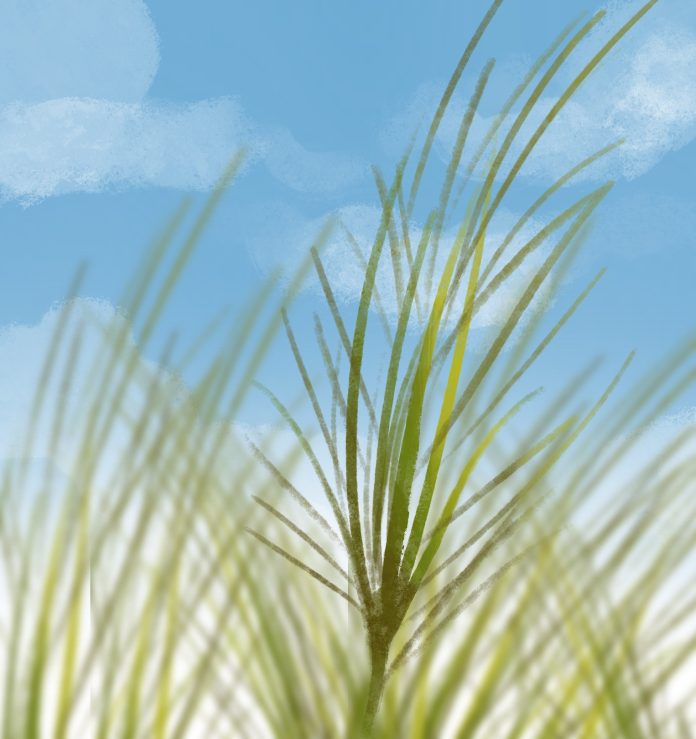Eric Kwon
Science & Technology Editor
You have likely encountered this weed and have distinct memories of it, as their numbers seem infinite, and encounters with them are memorable. Its name, though interesting, probably remains unknown to most, even though they are incredibly widespread throughout UC Santa Barbara’s (UCSB) campus.
The Medusahead, otherwise known as taeniatherum caput-medusae, is recognizable throughout California as well as other western states and Canada. It originates from Eurasia and the Mediterranean area. Its identification as a weed can give us insight into the nature of this plant — it is invasive and has a wide array of modes of transportation.
The Medusahead is certainly easy to spot. They do not grow very high (up to 2 feet), yet they leave impressions in other ways. The end of the plant is a spike with awns (bristles) that sprout outward. When matured, they spread horizontally like Medusa’s head from Greek mythology, which is how this plant gets its unique name.
These awns stay present even as the plant dries up and turns into a more recognizable tawn color that can blend into its environment easily. They are spiky and have likely painfully clung onto you at some point (most likely in the fall) if you have ever walked across the valleys at the UCSB campus.
Its ability to cling so easily explains why it works so effectively as a weed as they stick onto animals that carry and disperse it. These barbs work doubly to damage animals trekking through these grasses. Of course, it is also spread via wind and water. Multiple stem heads typically grow from the base of each Medusahead, in which each stem head contains 20+ seeds.
In addition, it has a high production of thatch, leading to layers of both dead and alive plant matter, which inhibits the production of surrounding plants (though not the Medusahead). Not to mention, it is highly flammable — which is not a good sign, considering recent widespread California wildfires.
As expected, a series of countermeasures have been taken to try and stop the spread of the weed, though the extent of its success can be debated. There is a whole array of methods, including chemical and nonchemical, that have been attempted. This includes mowing, tilling, burning, the use of many different types of herbicides, etc.
The Medusahead might be comparable to mosquitoes, though even mosquitoes provide nutrition for bats, frogs, and birds. Birds and livestock actively avoid Medusahead or else they receive a nasty spike in the face. However, they can be used for grazing in its earlier stages, when its awns are not yet developed to the point where they become stiff and sharp.
It seems apparent that the Medusahead plant is nothing but a menace to its local flora and fauna, whilst becoming a potential threat to farther territories. Despite all these eradication efforts, it seems that the weed is here to stay, even as its surrounding environment experiences change. Covering yourself with long and durable pants (as well as shoes) will probably be the most anyone can do, and its widespread nature should be something to keep in mind for any hike you might undertake.











